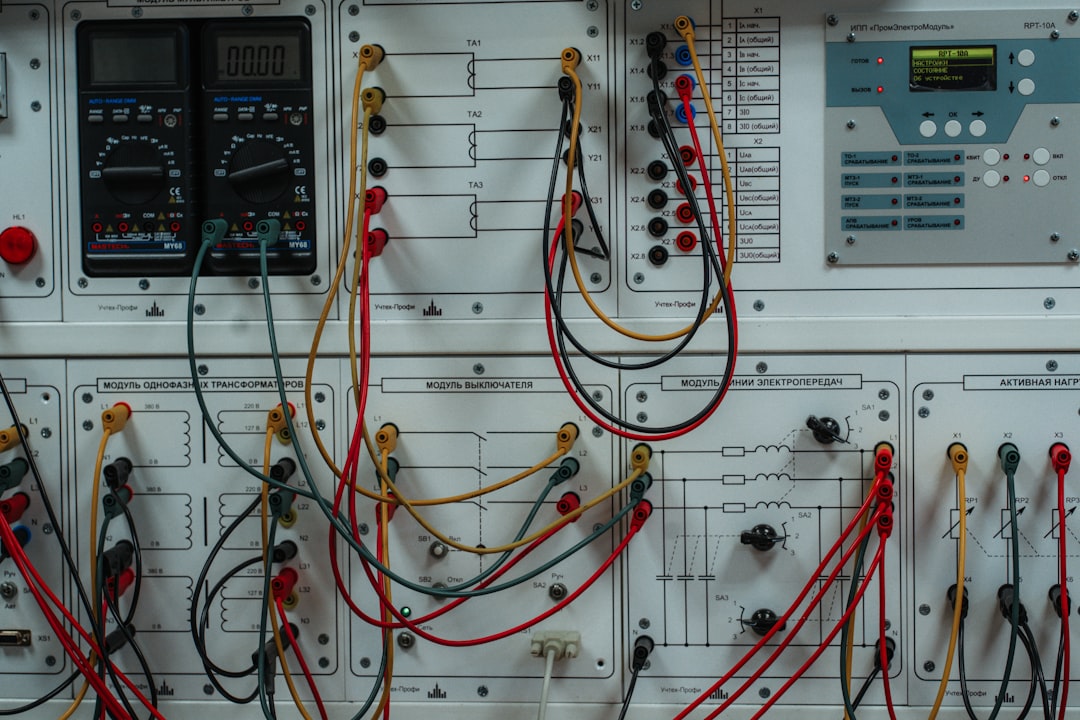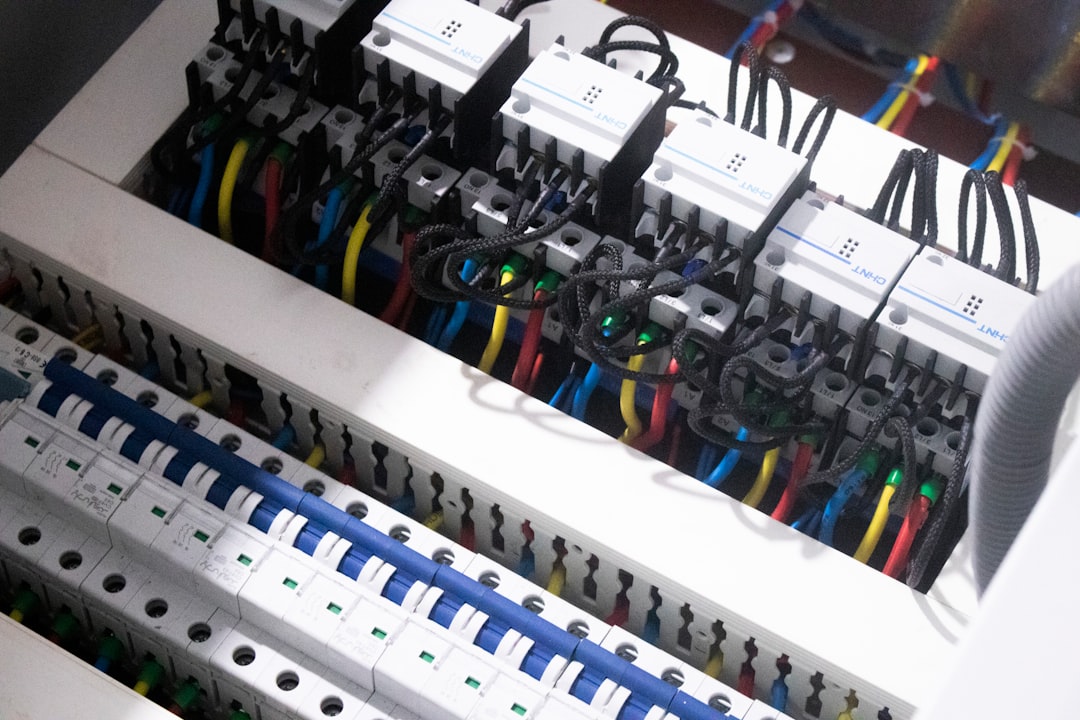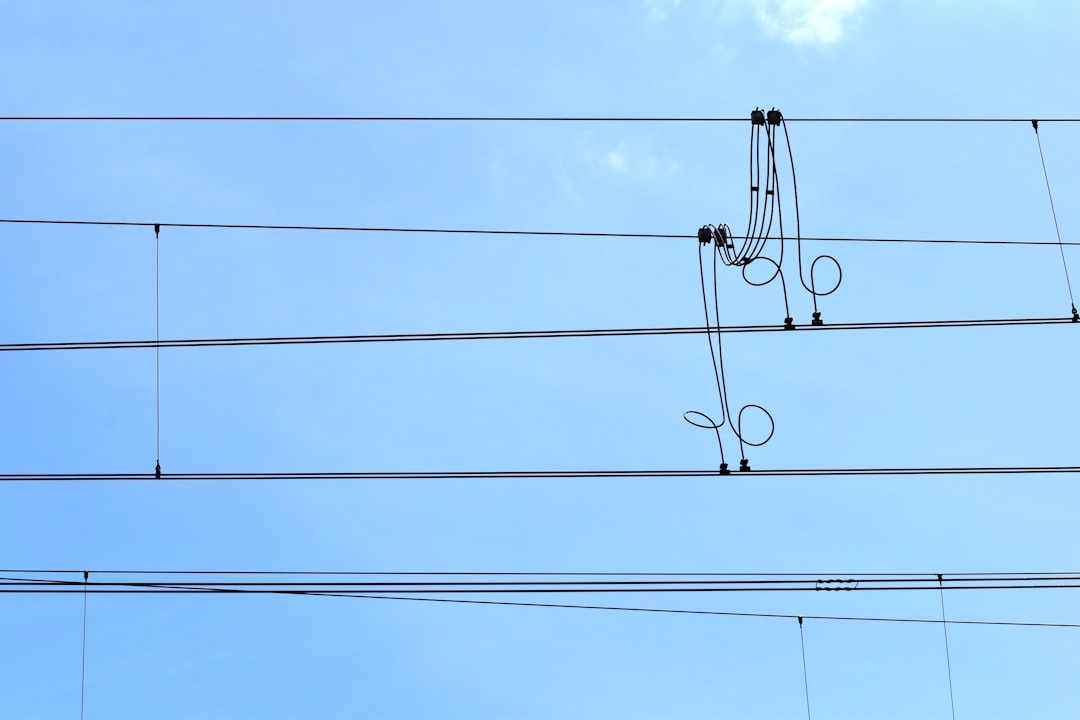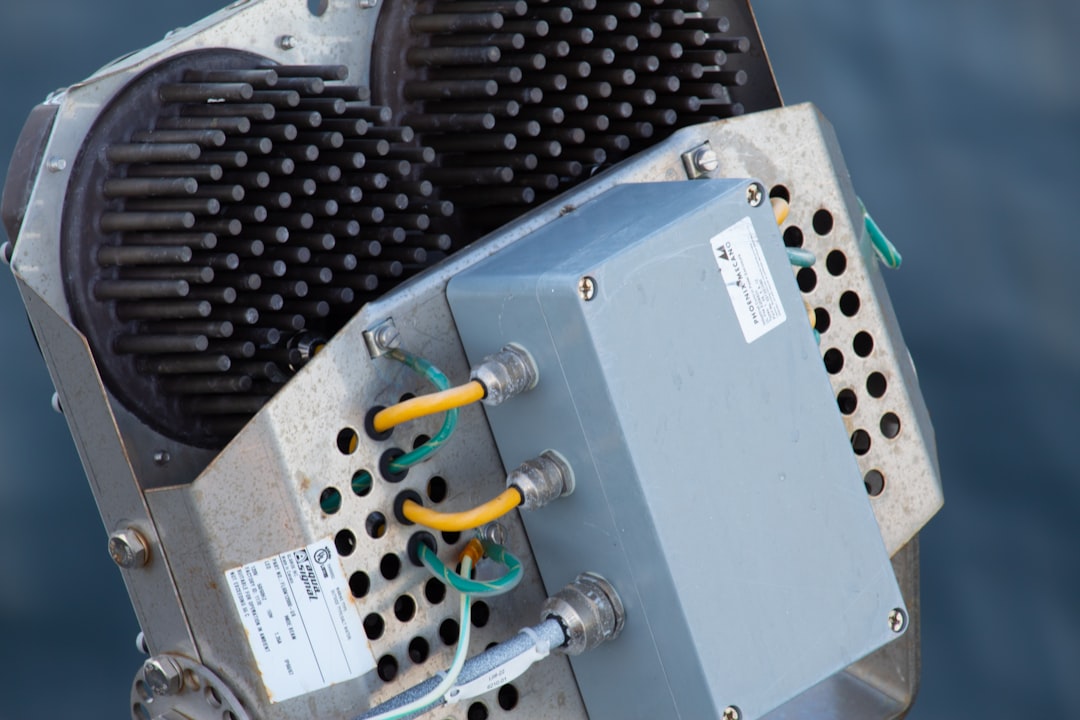

Engage prospects with a scan and streamline customer engagement with FREE QR code marketing tools by Sona – no strings attached!
Create a Free QR CodeFree consultation

No commitment

Engage prospects with a scan and streamline customer engagement with FREE QR code marketing tools by Sona – no strings attached!
Create a Free QR CodeFree consultation

No commitment
QR codes have transformed from novelty to necessity as commercial electrical services look to offer seamless offline-to-online engagement. Many companies still struggle to bridge the gap between physical client touchpoints and actionable digital outcomes, missing high-value prospects because they are not tracked or identified. In a field that lives and breathes in the physical world, the ability to bring every sign, invoice, or site interaction into a measurable digital journey is quickly becoming a competitive requirement. See practical tactics in the Sona QR marketing guide.
The commercial electrical sector faces unique pressures: administrative bottlenecks, manual processes that delay client response, and the challenge of capturing timely, accurate lead data from onsite engagements. Facilities managers, property owners, and construction teams now expect providers to deliver modern, pain-free interactions with little tolerance for missed calls or cumbersome form fills. QR codes streamline project handoffs to compliance tracking, capturing engagement data, personalizing communications, and allowing firms to respond quickly. This is not just about convenience; it is about turning every physical interaction into a signal that informs better service and faster growth.
By integrating QR codes throughout field and office operations, commercial electrical contractors deliver efficiency and convenience to clients, and gain valuable visibility into previously anonymous or untracked interactions. This strategic shift supports more effective lead generation, smoother onboarding, and targeted follow-up, helping businesses stand out in a crowded, competitive market. It also enables a single source of truth for engagement across print, vehicles, jobsite signage, and documentation, so teams can prioritize what works and fix what does not.

Many commercial electrical firms still rely on paper sign-up sheets, static business cards, and phone-based scheduling, which creates friction for prospects and missed chances to capture early-stage interest. Without real-time digital access, staff often lack the visibility needed to act quickly or nurture intent into booked work. QR codes bridge this gap by turning physical materials into live, trackable entry points for scheduling, documentation, and customer support.
The goal is to replace slow or ambiguous analog moments with fast, measurable digital actions that serve both the client and your team. Done right, QR codes shorten the distance between interest and action, allowing business development, project managers, and dispatch to see signals in real time and respond while intent is still high.
By addressing slow manual processes and investing in real-time capture through modern QR platforms like Sona QR, contractors can target real decision-makers, avoid delays, and deliver digital experiences that meet today’s expectations. The result is a tighter operating rhythm: faster estimates, better compliance documentation, and a clearer path from first scan to booked revenue.
In commercial electrical services, a single missed engagement or delayed response can mean lost contracts or dissatisfied clients. Facilities managers and property owners are often juggling multiple vendors and competing priorities, so if your communication requires a phone call, a voicemail, or a long web URL, it may be deferred or forgotten. Without a digital bridge on every physical asset, you risk losing interested prospects and missing service requests that would have become profitable work.
QR codes reduce that friction by converting printed and onsite materials into immediate actions. They are fast, familiar, and do not require an app. That means the moment a facilities manager needs a status update, an owner needs a copy of a compliance record, or a general contractor wants a project walk-through, a scan can trigger the right response with no delay. For inspiration, browse these QR marketing examples. The added benefit is visibility: you can see which materials generate interest and which environments are most productive.
This ability to surface engagement signals and convert analog touchpoints into connected digital journeys is now a critical differentiator. When combined with platforms like Sona QR, firms can detect warm opportunities and respond proactively, instead of relying on chance callbacks and manual follow-up that arrives too late.

Choosing the right QR format ensures each scan triggers the best next step for the client and the business. Commercial electrical contractors often need more than a simple link. They need formats that handle contact exchange, rapid intake of information, and instant access to documentation that keeps teams safe and compliant.
Most engagements fall into a few categories: schedule and quote requests, documentation retrieval, and support escalation. Below are formats that align to these needs, with specifics for the commercial electrical environment.
Dynamic QR codes are particularly valuable in this sector. When resources change or projects move through phases, you can retarget the same code to a new page without reprinting signage or labels. This protects firms from compliance lapses and communication breakdowns due to stale data while keeping the field team confident that the latest information is always one scan away.

Many contractors already have a wealth of physical touchpoints in circulation, from equipment labels to vehicle wraps. The growth opportunity comes from activating those surfaces as digital gateways and measuring the results. Each code placed at a natural engagement point becomes a net to capture intent and route it to the right team in real time.
Think in terms of context and intent. Where do stakeholders need information quickly, and where does your brand already exist in the physical environment? Placing a QR code where a question arises or a decision is made is the key to turning attention into action.
Tactical deployment at these friction points sharpens acquisition and retention. You will not only attract new leads by meeting them in the moment, you will also retain current clients by revealing disengagement early and creating a smooth channel for ongoing support.

QR codes become most powerful when they are mapped to real jobs-to-be-done. In commercial electrical work, that means safety, documentation, service response, and customer satisfaction. When each code is tied to an action and a business outcome, you can quantify value and improve the process over time.
Below are three high-impact use cases that match common interactions in commercial electrical services. They focus on reducing risk, accelerating response, and elevating customer experience, all while capturing data that can be used for future outreach.
Each of these use cases fits cleanly into existing workflows and requires minimal training for adoption. They also provide measurable outcomes such as increased response rates, reduced time to schedule, and a lift in positive reviews that strengthens your reputation in competitive bids.
A persistent challenge in commercial electrical marketing is identifying and segmenting leads based on real intent. Anonymous interactions and delayed data entry turn into wasted spend and generic outreach that misses the mark. QR codes change this by capturing behavior and context at the source, then flowing that intelligence into your CRM and ad platforms.
By placing unique codes across different surfaces and journey stages, you can automatically classify interest and run personalized follow-up. This allows your team to treat a facilities manager differently than a general contractor or a property owner, and to prioritize active projects over casual interest.
Modern solutions like Sona QR unify scan data with centralized account profiles so teams can act quickly and meaningfully. The outcome is less waste, faster speed-to-lead, and higher close rates because you meet each audience with timely, relevant content.
Many providers still treat print, events, and digital campaigns as disconnected silos, which obscures performance and slows learning. QR codes provide the connective tissue across channels, enabling real-time engagement and consistent data capture that makes optimization straightforward.
When every channel can trigger action and measurement, you can shift budget to what works. Contractors gain a clear view into which postcards, trucks, billboards, or property signs drive the most engagement and what content scanners prefer once they land online.
QR codes serve as the offline onramp to your digital marketing engine and unlock a new layer of measurement across previously opaque channels. With a centralized platform like Sona QR, you can manage all your codes, monitor performance, and sync scan data with your CRM and ad platforms to maintain a single view of the buyer journey.
Succeeding with QR codes is not about printing a square and hoping for scans. It requires aligning a specific friction point to a clear action, then designing for visibility, scannability, and attribution. A methodical approach ensures you launch quickly, measure accurately, and improve continually. For creative integration ideas, check these QR advertising tips.
Use the following checklist to plan and execute QR campaigns that move the needle. Each step includes tactical guidance tailored to typical commercial electrical contexts such as jobsites, fleets, invoices, and events.
Clarify the outcome you want, then map a QR action to it. If the problem is slow estimate cycles after walkthroughs, the QR code should drive immediate scheduling or a follow-up form on the spot. If surveys suffer from low participation, place a feedback QR on invoices or completion reports with a short, mobile-optimized form.
Select between static and dynamic codes based on permanence, data needs, and flexibility. Static is fine for evergreen resources like safety manuals. Dynamic is ideal for campaigns, testing, and data capture.
Design for the environment where the code will live. In harsh jobsite conditions, choose high-contrast colors and a generous quiet zone. On moving vehicles, ensure the code is large enough for a safe-distance scan at slow speeds, and pair it with a short CTA that can be read quickly.
Place codes where engagement already occurs. For commercial electrical services, that includes vehicles, jobsite boards, invoices, proposals, equipment labels, property signage, and trade show booths.
Launch with analytics in place. Use Sona QR to track scans by time, location, device, and asset. Monitor conversion behavior, identify drop-off points, and iterate on design, CTA, or destination to improve performance.
Incomplete or outdated performance data is a major hurdle in the trades. Without it, electrical services teams cannot measure campaign effectiveness, compare channels, or prove ROI to leadership. QR analytics solve this by adding identity, context, and outcomes to assets that were previously unmeasurable.
Modern platforms go beyond counting scans. They connect offline actions with CRM records, web sessions, and deal stages to show how a single scan contributes to pipeline and revenue. This end-to-end view supports smarter budget allocation and faster operational decisions across sales and service.
With Sona QR and Sona.com, you can centralize scan data, unify buyer journeys, and attribute revenue accurately. Identity resolution and CRM enrichment help connect anonymous scans to known accounts, so your team can act on the right opportunities faster and prove impact with confidence.
Scaling QR impact requires consistency and a clear operating playbook. The more you embed scanning into everyday interactions, the more data you collect and the easier it becomes to predict what works. Small process tweaks, paired with automation, compound over time into higher conversion rates and better customer experience.
Field and office alignment is crucial. If techs know how to prompt scans and explain the benefit, participation rises. If the office automates follow-up and reporting, you close the loop and create a foundation for continual improvement. For field-friendly tactics, review these QR tips for contractors.
Creative deployments pay off. For example, place a “Scan for Power Quality Assessment” code on service reports to seed future projects, or use a “Scan for Annual Maintenance Plan” code on invoices to shift one-time clients into recurring agreements.

The most effective QR programs are built around genuine operational pain points, not novelty. When a code removes friction or accelerates a decision, adoption follows naturally. Here are examples that show how small changes in placement and destination can unlock meaningful results. See how construction pros leverage QR in these construction QR benefits.
Consider how each scenario captures data that improves outreach and retention. The real win is not only in the first action taken, but in the insight gathered that powers smarter follow-up and better customer experience next time.
These cases demonstrate a common pattern: choose meaningful placements, route scans to task-specific destinations, and close the loop with timely follow-up. The combination delivers measurable gains in responsiveness, satisfaction, and revenue.
Success with QR codes comes down to aligning design, placement, and messaging to the real-world context. The right CTA and location can triple scan rates, while a poorly placed or generic code can be invisible. A few best practices consistently separate strong performers from those that stall.
Avoid the urge to send every scan to a generic homepage. That creates drop-off and confuses measurement. Instead, route scans to concise, mobile-optimized pages tailored to the exact task, then reinforce with automation and clear next steps.
Prudent strategy and ongoing education guard against wasted effort and ensure QR codes deliver on their promise: modernizing touchpoints and making every client interaction count. Build a habit of reviewing analytics monthly, then refine creative, placements, and workflows accordingly.
QR codes are rapidly becoming an essential lever for commercial electrical services companies aiming to convert every physical interaction into actionable digital engagement. By identifying previously anonymous activity on trucks, jobsite signage, invoices, and equipment labels, businesses can accelerate lead flow and surface meaningful client signals that drive revenue. A connected QR strategy also reduces administrative burden, keeps documentation current, and shortens the path from inquiry to scheduled work.
Companies that prioritize bridging analog and digital channels benefit from faster response times, improved retention, and clearer attribution across their marketing mix. Moving beyond outdated, generic approaches, QR-enabled touchpoints offer a dynamic, scalable way to identify, segment, and engage high-value prospects precisely when intent is highest. With tools like Sona QR and Sona, you can manage codes centrally, enrich CRM data, and attribute scans to pipeline with confidence, turning every scan into a step toward growth. Start creating QR codes for free at Sona QR.
QR codes have revolutionized commercial electrical services by transforming how technicians and clients access critical information and streamline operations. From enabling instant, secure access to electrical panels and equipment manuals to facilitating seamless service verification and scheduling, QR codes replace cumbersome paperwork with fast, mobile-friendly interactions that enhance efficiency and safety on every job site. Imagine instantly retrieving detailed service histories or compliance documents with a simple scan—saving time and reducing errors.
With Sona QR, you can create dynamic, trackable QR codes in seconds, update access points and service information without reprinting, and connect each scan to actionable data that drives operational excellence. No more missed maintenance, no delays accessing vital information—just smarter, faster commercial electrical service delivery.
Start for free with Sona QR today and empower your team to work smarter, impress clients, and unlock new levels of productivity with every scan.
Consider a provider’s ability to deliver seamless digital engagement, fast response times, efficient workflows, use of modern tools like QR codes, and proven success in converting physical interactions into actionable digital outcomes.
Use QR codes on signage to provide instant access to up-to-date safety protocols, lockout tagout procedures, PPE requirements, and hazard assessments, improving compliance and transparency.
Common issues include delayed service responses and outdated documentation, which can be addressed by using QR codes for real-time incident reporting, instant access to documentation, and faster scheduling of maintenance or repairs.
Regular maintenance supported by QR-enabled scheduling and documentation access reduces downtime, improves compliance, accelerates response times, and helps identify and resolve issues before they escalate.
Deploy QR codes to capture maintenance requests, incident reports, and feedback directly from onsite staff or tenants, enabling quick identification of recurring issues or urgent needs for upgrades or repairs.
QR codes convert physical touchpoints like signage, vehicles, and invoices into immediate, trackable digital actions that speed up scheduling, provide instant documentation access, and enable timely communication.
Useful QR code formats include web links for proposals and documentation, vCards for contact sharing, forms for maintenance requests and feedback, Wi-Fi access for project networks, and dynamic codes for content updates.
Place QR codes on jobsite signage, service vehicles, invoices, equipment labels, panel directories, trade show materials, and property signage where stakeholders naturally seek information or need to take action.
By tracking scan data such as time, location, device, and source in CRM systems, firms can analyze conversion rates, identify high-performing assets, monitor response times, and attribute revenue to specific QR interactions.
Design codes with clear branding and benefit-focused calls to action, test scannability in real-world conditions, deploy on high-visibility assets matched to user behavior, and connect scans to automated CRM workflows for follow-up.
QR codes capture intent and context at the point of engagement, enabling segmentation and personalized follow-up, which accelerates lead conversion and allows early detection of disengagement to improve retention.
Integrating QR scan data into CRM platforms centralizes lead information, automates follow-up actions like appointment reminders and review requests, enriches customer profiles, and supports targeted marketing and sales efforts.
Use Sona QR's trackable codes to improve customer acquisition and engagement today.
Create Your FREE Trackable QR Code in SecondsJoin results-focused teams combining Sona Platform automation with advanced Google Ads strategies to scale lead generation

Connect your existing CRM

Free Account Enrichment

No setup fees
No commitment required

Free consultation

Get a custom Google Ads roadmap for your business






Launch campaigns that generate qualified leads in 30 days or less.
